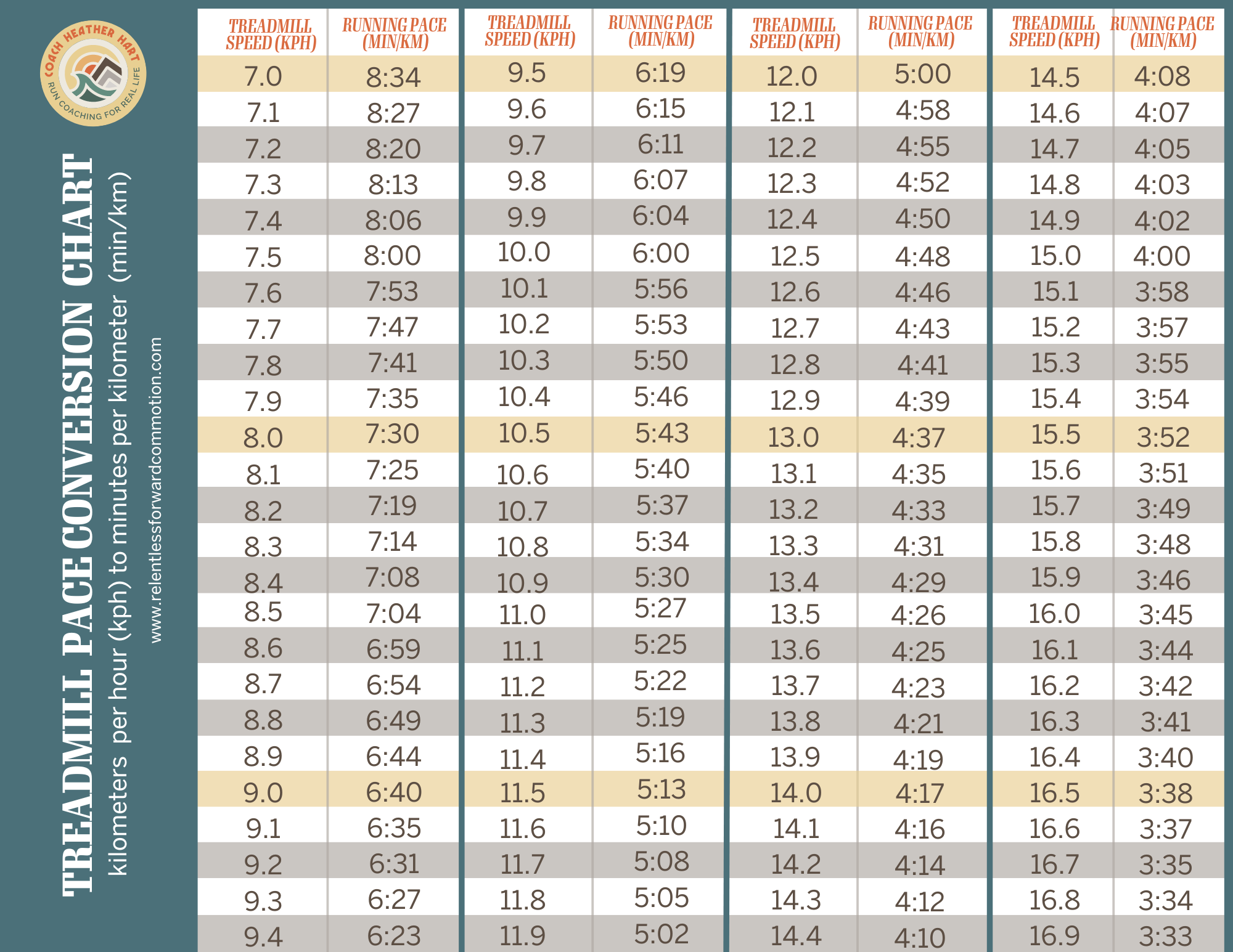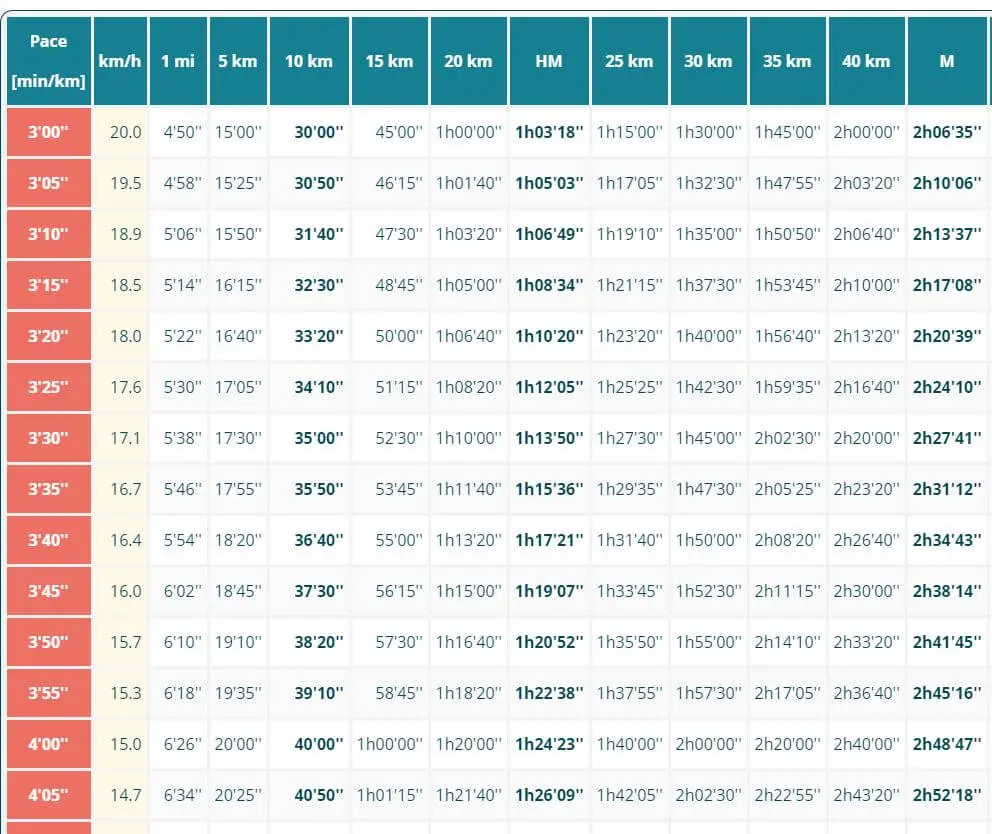Unlock Your Running Potential: A Comprehensive Guide To Running 7 Km Per
Running 7 km per is a unit of measurement for distance covered by a runner. It represents the distance run in kilometers for every period of time, often an hour. For instance, a runner who covers 7 kilometers in an hour would be said to be "running 7 km per hour".
Measuring distance in this manner has been a crucial aspect of running for centuries, allowing athletes and fitness enthusiasts to track their progress and compare their performance. It enables them to set specific goals, monitor their improvement, and adjust their training plans accordingly. One significant historical development in this regard was the introduction of the metric system, which standardized the measurement of distance in kilometers rather than miles.
In this article, we will delve deeper into the significance of running 7 km per, exploring its relevance in various running disciplines, discussing its benefits for health and fitness, and examining the techniques and strategies used to improve running efficiency.
Read also:Brad Greenquist Nude The Truth Behind The Clickbait And Sensationalism
Is Running 7 Km Per
Understanding the different dimensions and aspects involved in "running 7 km per" is crucial for runners and fitness enthusiasts alike. These aspects provide a comprehensive framework for assessing performance, setting goals, and improving running efficiency.
- Distance: The total kilometers covered while running.
- Time: The duration taken to cover the distance, typically measured in hours or minutes.
- Speed: The rate at which the distance is covered, calculated as distance divided by time.
- Pace: The inverse of speed, representing the time taken to cover a specific distance.
- Endurance: The ability to sustain running over longer distances or periods.
- Training: The structured activities undertaken to improve running performance.
- Nutrition: The dietary intake that supports running and recovery.
- Recovery: The process of repairing and rebuilding muscles after running.
- Injury prevention: Strategies employed to minimize the risk of running-related injuries.
- Motivation: The psychological factors that drive and sustain running efforts.
These aspects are interconnected and influence each other. For instance, improving endurance allows runners to cover longer distances, while effective training can enhance speed and pace. Understanding these relationships and focusing on the relevant aspects can help runners achieve their running goals and optimize their performance.
Distance
Distance is a fundamental component of "running 7 km per". It represents the total kilometers covered while running and is a key factor in determining speed, pace, and endurance. The longer the distance covered, the greater the overall running performance.
For instance, a runner who covers 7 kilometers in an hour is said to be "running 7 km per hour". This measurement provides valuable information about the runner's speed and endurance. A runner who can cover a greater distance in the same amount of time is considered to be faster and has better endurance.
Understanding the relationship between distance and "running 7 km per" is crucial for runners who want to improve their performance. By setting specific distance goals and monitoring their progress, runners can track their improvement and make adjustments to their training plans accordingly. Additionally, understanding the distance covered can help runners prevent injuries by gradually increasing the distance they run and allowing their bodies to adapt.
In summary, distance is an integral part of "running 7 km per". It is a measure of the total kilometers covered while running and is a key factor in determining speed, pace, and endurance. Understanding the relationship between distance and "running 7 km per" is essential for runners who want to improve their performance and optimize their training.
Read also:Ashley Resch Nude The Truth Behind The Clickbait
Time
Time is a crucial aspect of "running 7 km per". It represents the duration taken to cover a specific distance and is a key factor in determining speed, pace, and endurance. Runners often use time as a measure of their performance, aiming to cover distances in shorter periods.
- Duration: The total time taken to cover a specific distance, typically measured in hours or minutes.
- Speed: The rate at which the distance is covered, calculated as distance divided by time. A faster speed indicates covering the distance in a shorter duration.
- Pace: The inverse of speed, representing the time taken to cover a specific distance. A slower pace indicates taking more time to cover the distance.
- Interval training: A training method involving alternating periods of high-intensity running with rest or low-intensity running. Time is a key factor in interval training, with runners aiming to maintain specific durations for each interval.
Understanding the relationship between time and "running 7 km per" is essential for runners who want to improve their performance. By setting specific time goals and monitoring their progress, runners can track their improvement and make adjustments to their training plans accordingly. Additionally, understanding the time taken to cover distances can help runners pace themselves effectively during races or long runs.
Speed
Speed is a crucial component of "Is Running 7 Km Per" as it measures the rate at which the distance is covered. It is calculated by dividing the distance by the time taken to cover that distance. A runner's speed is often expressed in kilometers per hour (km/h) or minutes per kilometer (min/km).
Understanding the relationship between speed and "Is Running 7 Km Per" is essential for runners who want to improve their performance. By monitoring their speed during training, runners can identify areas where they can improve their efficiency and become faster. Additionally, understanding speed can help runners set realistic goals and track their progress over time.
There are several factors that can affect a runner's speed, including fitness level, training, terrain, and weather conditions. By understanding the impact of these factors, runners can make adjustments to their training and racing strategies to optimize their speed.
In summary, speed is a critical component of "Is Running 7 Km Per" and is an important factor for runners to consider when training and racing. By understanding the relationship between speed and "Is Running 7 Km Per", runners can improve their performance and achieve their running goals.
Pace
Within the context of "Is Running 7 Km Per," pace holds significant importance as it measures the time taken to cover a specific distance, providing valuable insights into a runner's performance and strategy. Understanding pace allows runners to assess their progress, set realistic goals, and develop effective training plans.
- Duration: Pace is directly related to duration, the total time taken to cover a specific distance. Runners can calculate their pace by dividing the duration by the distance covered.
- Intensity: Pace is also an indicator of running intensity. A faster pace typically suggests higher intensity, while a slower pace indicates lower intensity. This understanding helps runners adjust their effort levels during training and racing.
- Goal Setting: Pace serves as a benchmark for goal setting. Runners can establish pace-based goals to improve their performance over time. These goals may involve achieving a specific pace for a certain distance or reducing their pace gradually.
- Race Strategy: In competitive races, runners often employ strategic pacing. They may start at a conservative pace and gradually increase their speed throughout the race or maintain a consistent pace to ensure optimal performance.
Comprehending the facets of pace empowers runners to optimize their training and racing approaches. By considering their fitness levels, race distances, and personal goals, runners can leverage pace as a tool to enhance their overall performance and achieve their running aspirations.
Endurance
Endurance plays a vital role in "Is Running 7 Km Per," as it determines a runner's ability to maintain their performance over extended distances or durations. Without adequate endurance, runners may face challenges in completing longer runs or maintaining a consistent pace throughout their runs.
To improve endurance, runners engage in training programs that gradually increase the distance and duration of their runs. This allows their bodies to adapt and develop the necessary physiological adaptations to sustain prolonged running. Regular training helps runners build stronger muscles, improve their cardiovascular fitness, and increase their body's efficiency in utilizing oxygen.
Understanding the connection between endurance and "Is Running 7 Km Per" is crucial for runners seeking to enhance their performance. By focusing on developing their endurance, runners can unlock their potential to cover longer distances, participate in endurance-based events, and achieve their running goals. Moreover, improved endurance can positively impact other aspects of health and fitness, such as overall cardiovascular health and weight management.
In summary, endurance is an essential component of "Is Running 7 Km Per." By cultivating endurance through targeted training, runners can push their limits, improve their overall fitness, and enjoy the benefits of sustained running over longer distances or periods.
Training
Training encompasses the systematic and purposeful activities designed to enhance a runner's performance in "Is Running 7 Km Per." It involves a comprehensive approach encompassing multiple facets, each contributing to the overall improvement of a runner's abilities.
- Interval Training: Alternating periods of high-intensity running with rest or low-intensity running. This method enhances cardiovascular fitness and speed.
- Tempo Runs: Running at a steady pace slightly faster than one's usual running pace, for an extended period. Tempo runs improve lactate threshold and endurance.
- Hill Workouts: Incorporating hills into running routes to increase muscular strength and cardiovascular fitness. This type of training enhances the runner's ability to maintain pace on inclines.
- Recovery Runs: Running at an easy pace following intense workouts or races. Recovery runs promote muscle repair and restoration, aiding in the runner's overall recovery process.
A well-structured training plan considers these facets, tailoring them to the individual runner's goals, fitness level, and progress. By incorporating these training components, runners can effectively improve their performance in "Is Running 7 Km Per," enabling them to cover longer distances, achieve faster speeds, and enhance their overall endurance.
Nutrition
Nutrition plays a pivotal role in optimizing performance in "Is Running 7 Km Per." A well-balanced diet provides the essential nutrients that fuel runs, aid in recovery, and support overall health. Understanding the nutritional needs associated with running empowers individuals to make informed choices that enhance their training and recovery processes.
- Carbohydrates: The primary source of energy for runners, carbohydrates should constitute a significant portion of the diet. Complex carbohydrates, such as whole grains and fruits, provide sustained energy release.
- Protein: Essential for muscle repair and growth, protein intake is crucial for runners. Lean meats, legumes, and dairy products are excellent sources of protein.
- Hydration: Adequate fluid intake, primarily water, is vital for maintaining hydration during runs. Proper hydration supports thermoregulation, nutrient transport, and overall performance.
- Supplements: While a balanced diet should provide most essential nutrients, certain supplements, such as iron or electrolytes, may be beneficial for runners with specific needs or dietary restrictions.
By adhering to sound nutritional practices, runners can optimize their energy levels, promote recovery, and maximize their performance in "Is Running 7 Km Per." A well-nourished body is better equipped to handle the demands of running, reducing the risk of injuries and enhancing the overall training experience.
Recovery
Recovery is an integral aspect of "Is Running 7 Km Per", enabling runners to effectively repair and rebuild muscles after the demands of running, ensuring optimal performance and long-term health. Neglecting recovery can hinder progress, increase the risk of injuries, and compromise overall well-being.
- Rest: Adequate rest is crucial for muscle recovery. Sleep allows the body to release hormones that promote tissue repair and muscle growth.
- Nutrition: Proper nutrition provides the building blocks for muscle repair. Protein intake is especially important, as it supplies the amino acids necessary for muscle synthesis.
- Active Recovery: Light activities like walking or cycling can enhance blood flow and promote muscle recovery. Active recovery also reduces stiffness and improves flexibility.
- Stretching: Stretching helps to improve muscle flexibility and range of motion, reducing the risk of injuries and enhancing overall running performance.
By incorporating these recovery strategies into their routine, runners can optimize their training, reduce the risk of injuries, and achieve their running goals effectively. Recovery is not merely a passive process but an active component of "Is Running 7 Km Per," essential for maintaining peak performance and overall well-being.
Injury prevention
Understanding the connection between "Injury prevention: Strategies employed to minimize the risk of running-related injuries." and "Is Running 7 Km Per" is essential for runners seeking to maintain optimal performance and long-term health. Running involves repetitive motion and high-impact forces, making runners susceptible to various injuries if proper preventive measures are not taken.
Injury prevention strategies are critical components of "Is Running 7 Km Per" as they aim to reduce the risk of developing running-related injuries, such as stress fractures, shin splints, and plantar fasciitis. These strategies include proper warm-up and cool-down routines, incorporating strength training exercises to enhance muscular stability, and employing appropriate running techniques to minimize impact forces. By adopting these preventive measures, runners can effectively safeguard their bodies and continue enjoying the benefits of running.
Real-life examples of injury prevention within "Is Running 7 Km Per" include runners who regularly engage in dynamic stretching exercises before their runs to improve flexibility and range of motion. Additionally, runners who incorporate hill workouts into their training plans strengthen their calf muscles and Achilles tendons, reducing the risk of common running injuries. These examples highlight the practical applications of injury prevention strategies in "Is Running 7 Km Per."
Embracing injury prevention strategies empowers runners to train consistently, participate in races without setbacks, and achieve their running goals. Neglecting injury prevention can lead to painful and debilitating injuries, hindering progress and potentially ending running careers prematurely. Therefore, runners must prioritize injury prevention as an integral part of "Is Running 7 Km Per" to maximize their performance and longevity in the sport.
Motivation
Motivation is a critical component of "Is Running 7 Km Per" as it encompasses the psychological factors that drive individuals to initiate and maintain their running endeavors. Understanding the connection between motivation and running performance is crucial for runners seeking to achieve their goals and experience lasting success in the sport.
Intrinsic motivation, stemming from the enjoyment and satisfaction derived from running itself, plays a vital role in sustaining running efforts over time. Runners who are intrinsically motivated find pleasure in the physical activity, the sense of accomplishment, and the mental clarity that running provides. This internal drive fuels their dedication and commitment to the sport, allowing them to overcome challenges and persist even when faced with setbacks.
Extrinsic motivation, on the other hand, involves external rewards or incentives that encourage individuals to run. While extrinsic motivation can be effective in initiating running behavior, it is often less sustainable in the long term. Runners who rely solely on extrinsic motivation may find it difficult to maintain their running routine when the rewards or incentives are no longer present.
Cultivating intrinsic motivation is essential for runners who aspire to achieve long-term success and fulfillment in the sport. By identifying and focusing on the intrinsic rewards of running, runners can develop a deep-seated love for the activity, which will sustain their efforts even during challenging times. Intrinsic motivation empowers runners to set ambitious goals, embrace the journey, and derive genuine enjoyment from the process of running.
In conclusion, "Is Running 7 Km Per" encompasses a multifaceted exploration of the physiological, psychological, and practical aspects of running. The article delves into essential concepts such as distance, time, speed, pace, endurance, training, nutrition, recovery, injury prevention, and motivation, providing readers with a comprehensive understanding of the factors that influence running performance and overall well-being.
Key insights from the article include:
- Understanding the interconnections between these concepts is crucial for runners seeking to optimize their performance and achieve their running goals.
- Embracing a holistic approach that addresses both the physical and mental aspects of running is essential for long-term success and enjoyment in the sport.
- Cultivating intrinsic motivation, setting realistic goals, and adopting effective training and recovery strategies are fundamental pillars for building a sustainable running practice.
As you embark on your running journey, remember that "Is Running 7 Km Per" is not merely a measure of distance but a testament to your dedication, resilience, and pursuit of a healthier, more fulfilling lifestyle. May the insights gained from this article empower you to embrace the challenges, celebrate the triumphs, and unlock the transformative power of running in your life.



